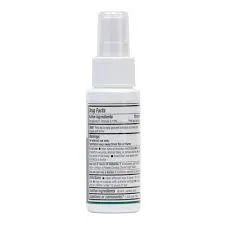dodecyldimethylbenzylammonium chloride
Dodecyldimethylbenzylammonium Chloride A Multifaceted Quaternary Ammonium Compound
Dodecyldimethylbenzylammonium chloride, commonly referred to as DDBAC, is a quaternary ammonium compound that has garnered significant interest in various fields due to its unique properties and versatile applications. As a member of the larger family of quaternary ammonium salts, DDBAC combines the characteristics of long-chain alkyl groups with a benzyl moiety, imparting distinctive hydrophobic and hydrophilic properties. This article explores the chemical structure, properties, uses, and safety considerations of DDBAC.
Chemical Structure and Properties
DDBAC has the chemical formula C23H38NCl. Its structure consists of a dodecyl (lauryl) group, which is a long hydrophobic hydrocarbon chain, and a dimethylbenzylammonium moiety. This unique arrangement gives DDBAC both lipophilic and hydrophilic characteristics, making it an effective surfactant. The quaternary nitrogen atom in the ammonium group carries a positive charge, allowing it to interact with negatively charged surfaces, making it an excellent agent for surface modification.
DDBAC is a white or slightly yellow solid at room temperature and is soluble in polar solvents such as water and alcohols. It exhibits antimicrobial properties, making it a suitable candidate for applications in disinfection and preservation. The compound has a relatively low toxicity, which increases its appeal for consumer products.
Applications in Various Industries
1. Disinfectants and Antiseptics One of the primary applications of DDBAC is in the formulation of disinfectants and antiseptic agents. Its antimicrobial properties enable it to effectively kill a broad spectrum of bacteria, fungi, and viruses, making it a common ingredient in hospital disinfectants, hand sanitizers, and surface cleaners. Its ability to form films on surfaces enhances its efficacy as a long-lasting antimicrobial agent.
2. Agriculture DDBAC is also utilized in agriculture, particularly as a surfactant in pesticide formulations. It helps improve the wetting and spreading properties of agricultural chemicals, ensuring better adhesion to plant surfaces and enhancing their effectiveness. Moreover, its antimicrobial action can help prevent plant diseases.
dodecyldimethylbenzylammonium chloride

3. Personal Care Products In the cosmetics and personal care industry, DDBAC is valued for its conditioning properties. It acts as an emulsifier and surfactant in various products, including shampoos, conditioners, and skin lotions. Its ability to ensure even distribution of active ingredients makes it a preferred choice among formulators.
4. Industrial Applications In industrial contexts, DDBAC is used in the formulation of fabric softeners, detergents, and other cleaning agents. Its surfactant properties aid in reducing surface tension, improving cleaning efficiency. Additionally, it finds applications in the textile industry as a softening agent.
Safety and Environmental Considerations
While DDBAC is generally regarded as safe when used as directed, it is crucial to handle it with care. Prolonged exposure to high concentrations can irritate the skin and eyes, and inhalation of dust or mists should be avoided. As with any chemical compound, it is essential to follow safety guidelines and use personal protective equipment (PPE) during handling.
Environmental considerations are also important. DDBAC can be toxic to aquatic life, and its persistence in the environment can raise concerns about bioaccumulation. Therefore, it is important to regulate its use and disposal to minimize environmental impact. Efforts are ongoing to develop biodegradable alternatives that can provide similar benefits without posing risks to ecosystems.
Conclusion
Dodecyldimethylbenzylammonium chloride stands out as a highly versatile compound with a wide range of applications across various industries. Its unique chemical structure, characterized by both hydrophobic and hydrophilic qualities, enables it to function effectively as a surfactant, disinfectant, and conditioning agent. As research continues into safer and more sustainable usage, DDBAC is likely to remain an important ingredient in both consumer products and industrial processes. Understanding its properties, applications, and safety measures is essential for anyone involved in its manufacture or use, ensuring that its benefits can be harnessed responsibly.
-
Pbtc Scale InhibitorPBTC: A Scale Protector for Industrial Water TreatmentNewsAug.05,2025
-
Organic Phosphonate: An Efficient Defender in the Field of Scale InhibitionNewsAug.05,2025
-
Hydrolyzed Polymaleic Anhydride: Green Pioneer in Scale Inhibition FieldNewsAug.05,2025
-
PAPEMP Polyamino Polyether Methylene Phosphonic Acid For SaleNewsAug.05,2025
-
Flocculant Water Treatment: A Pioneer in Purification in the Field of Water TreatmentNewsAug.05,2025
-
Benzyl Isothiazolinone: An Efficient and Broad-Spectrum Antibacterial Protective GuardNewsAug.05,2025





